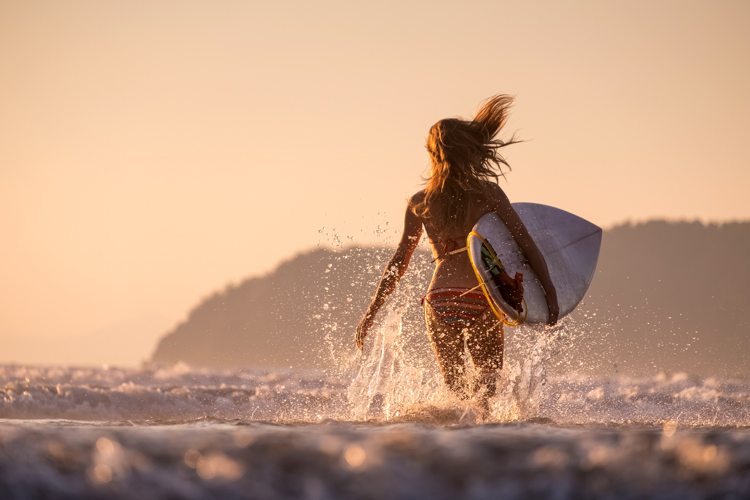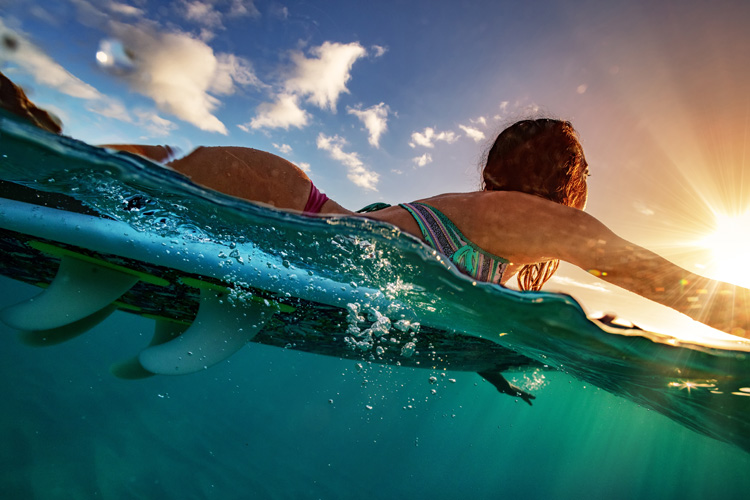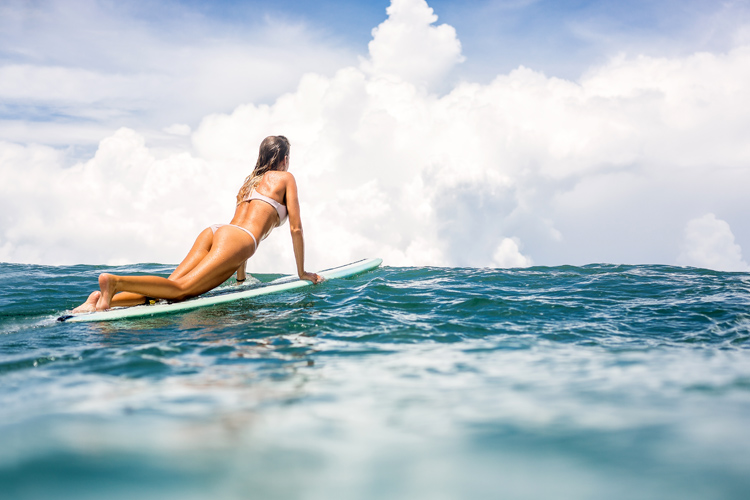Plastic surgery has become a common way of improving self-esteem, contributing to well-being and overall happiness.
The practice has been steadily increasing throughout the last decades, both in number and safety of available procedures.
Breast augmentation with implants is amongst the most frequent surgeries performed in female patients.
Surfing is a challenging sport involving a lot of paddling, push-ups, and high-impact maneuvers.
Whether they're waiting for a set or taking off on a wave, surfers are always exerting on the upper torso area.
Women who surf and submit themselves to breast augmentation are usually concerned about the timing of return to the water, the risks involved, and the recommendations needed.

Preoperative Care Recommendations
If you plan to have a breast augmentation with silicone implants, you should find a board-certified plastic surgeon and discuss some technical details of the procedure with him or her.
This will keep you safe and will enable you to choose the best aesthetic and functional option. You should discuss the advantages and limitations of the plane of insertion of the implant.
Retropectoral implants usually need a longer time to recover, and the pain with the exercise could persist for months after the surgery.
Also, the muscular strength of the pectoralis (required for paddling, for example) can be decreased after surgery because the muscle is released from the inferior origin in the chest wall.
However, other muscles will compensate for the strength lost and supply the extra effort needed.
If you are skinny, this could be a price you have to be willing to pay so that you will not feel and see the contour of the implant.
On the other hand, if you already have some breast tissue covering all the implants, you may benefit from a retroglandular positioning, right over the pectoralis, without compromising this muscle.
The selection of the type of implant will also affect recovery time and the surgical technique employed.
Thus, saline-filled implants (mainly used in the USA), high-cohesive silicone implants (the most common type all around the world), and polyurethane-covered implants (common in South America, Australia, and some places in Europe) should all be considered.
Polyurethane will fix your implant to the surrounding tissues to maintain the positioning and aesthetic results.
However, discomfort can persist longer with exercise. High-cohesive silicone implants will heal faster but - like saline-filled implants - can move or rotate.
Thus, extra care should be taken, and bra compression will be needed when practicing sports. You should discuss with your plastic surgeon the pros and cons of all these implants.

Post-surgery Care Tips
First of all, it is important to note that it is safe to surf and catch waves if you have breast implants. All implants have a high resistance to impact and pressure.
That said, it is essential to keep in mind that the aesthetic result of the surgery, as well as the proper healing, will need some time of rest and a careful, conservative, and progressive return to exercise.
Generally speaking, you should start exercising your lower limbs and do some extended walking after the first week of surgery, preferably on the beach.
This will be important to maintain shape and weight, keep you fit, and maintain the amount of salt every surfer needs over the skin.
You should be able to start exercising your arms and torso after the first month. Yoga, calisthenic exercises, and weightlifting should be encouraged, even if progressively.
Your pain will tell you if you are ready to move up and exercise more. Take the second and third months to regain strength in your upper body and prepare yourself for paddling and take-off.
After this, you can resume surfing. Paddle out on gentle swell and calm waters to regain confidence and comfort on top of the board.
It is always better to practice in the water right away instead of trying in on the sand because water will absorb the impact during paddling and take-off.
Finally, make sure to use a sports bra that will keep your breasts adjusted and tight under the suit or a bikini if you surf in a warm ocean environment.
This will be a new and better time for you. Enjoy it and keep on surfing.
Words by Mário Mendanha, M.D. | Plastic Surgeon | www.mariomendanha.com
